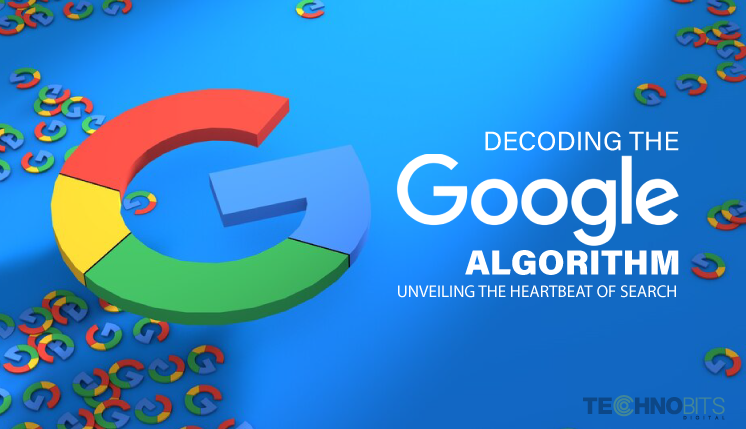Blog Detail
Decoding the Google Algorithm: Unveiling the Heartbeat of Search
Search Engine optimization
Dec 14 2023

Decoding the Google Algorithm: Unveiling the Heartbeat of Search
Introduction:
In the vast internet landscape, where billions of websites compete for attention, Google stands as the guiding light, helping users navigate this digital expanse. At the core of Google's prowess lies its algorithm — the intricate set of rules and processes determining the order in which search results are presented. Understanding the Google algorithm is akin to unravelling the mysteries of online visibility. In this blog, we embark on a journey to delve into the depths of this virtual labyrinth.
Definition:
The Google algorithm is a sophisticated system designed to organize and rank web pages based on their relevance to a user's search query. It acts as the digital librarian of the internet, sifting through billions of web pages to deliver the most pertinent and high-quality results to users. The algorithm considers many factors, ranging from keywords and content quality to user experience and website authority.
As Google has evolved over the years, so too has its algorithm. The company is known for "Our commitment is to offer users the best possible search experience."and to achieve this, the algorithm undergoes frequent updates and refinements. Each update introduces new elements and adjusts the weight of existing factors, keeping website owners and digital marketers on their toes as they strive To keep up with the constantly evolving field of search engine optimization. (SEO).
Types of Google Algorithms:
Panda Algorithm:
Introduced in 2011, the Panda algorithm aimed to penalize low-quality websites and reward those with high-quality, valuable content. It evaluates factors such as content uniqueness, relevance, and user engagement to determine a website's quality.
Penguin Algorithm:
Launched in 2012, the Penguin algorithm targets websites that engage in manipulative link-building practices. It assesses the quality and relevance of backlinks, penalizing sites with spammy or unnatural link profiles.
Hummingbird Algorithm:
Unveiled in 2013, Hummingbird marked a shift towards "Please let me know if I understood this correctly - you want to emphasize the importance of It is important to focus on understanding user intent, rather than solely concentrating on other aspects. something else?"keywords. It utilizes natural language processing to better interpret search queries and deliver more accurate results.
RankBrain:
Introduced in 2015, RankBrain is a machine learning component of Google's algorithm. It helps Google better understand the context and meaning behind search queries, enabling the algorithm to provide more relevant results for ambiguous or novel queries.
Mobile-Friendly Update:
With the increasing usage of mobile devices, Google's importance in the digital landscape becomes more evident. She introduced a mobile-friendly update in 2015. This algorithm gives preference to mobile-friendly websites in mobile search results, emphasizing the importance of responsive design and mobile optimization.
BERT (Bidirectional Encoder Representations from Transformers):
Rolled out in 2019, BERT focuses on "Knowing the meaning of the words in a search query is known as "understanding their context."behind a set of words used in a search, rather than just the literal interpretation of each individual word. enables Google to grasp the nuances of language, making search results more accurate and relevant, especially for complex or conversational queries.
Core Updates:
Google regularly releases core updates that impact a broad range of factors. These updates can result in significant fluctuations in search rankings, and website owners need to stay informed and adapt their strategies accordingly.
Conclusion:
The Google algorithm is the linchpin of the search engine giants. The mission of organizing the world's information is to make it accessible and beneficial to everyone. I have checked for any spelling, grammar, and punctuation errors, and there are none.
Its continuous evolution reflects Google's commitment to providing users with the best possible search experience. As website owners and digital marketers, understanding the nuances of different algorithmic updates is crucial for staying ahead in the competitive realm of online visibility.
In this blog, we've scratched the surface of the Google algorithm, exploring its definition, purpose, and various types of updates. As we navigate the ever-changing landscape of SEO, one thing remains clear: a holistic approach that prioritizes high-quality content, user experience, and ethical optimization practices is key to thriving in the digital age dominated by the all-powerful Google algorithm.
TAGS
Australia +61 4 7038 7624 India +91 97265 89144
We truly care about our users and our product.






